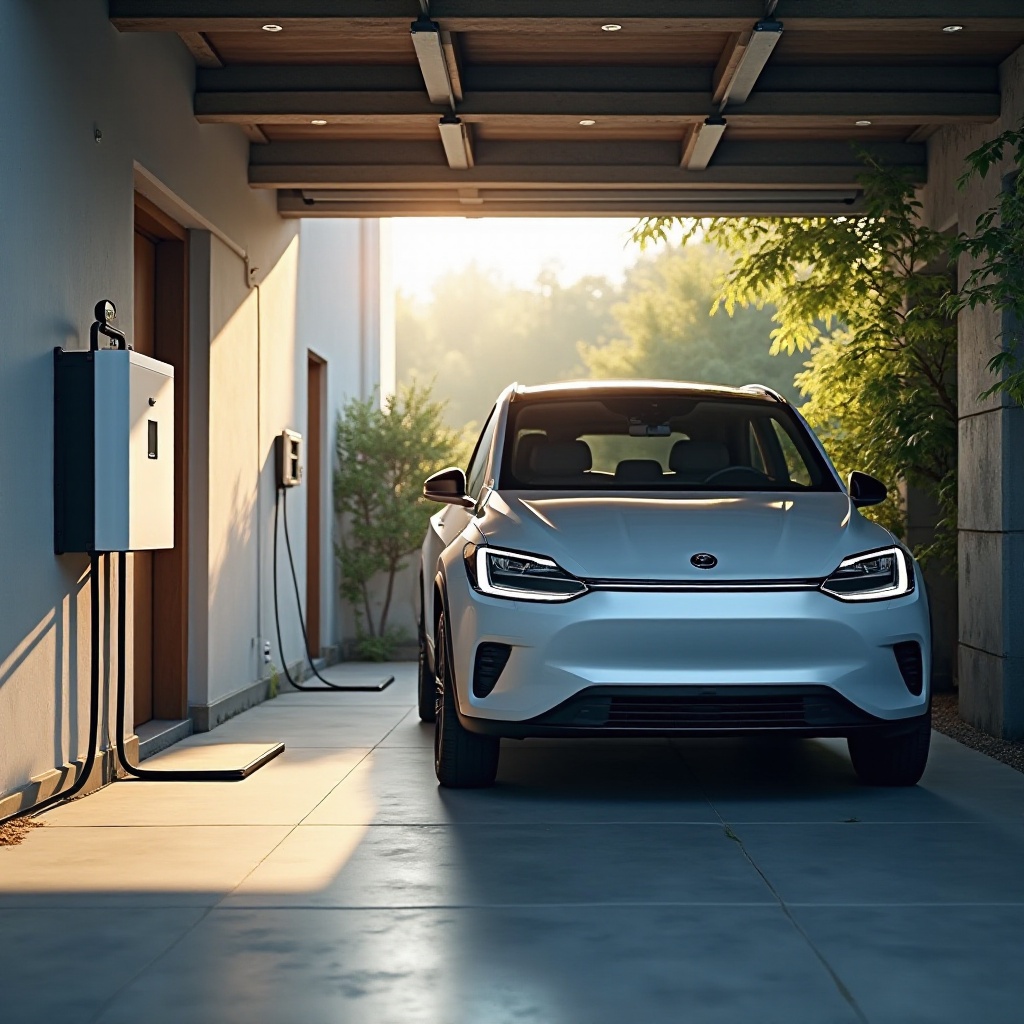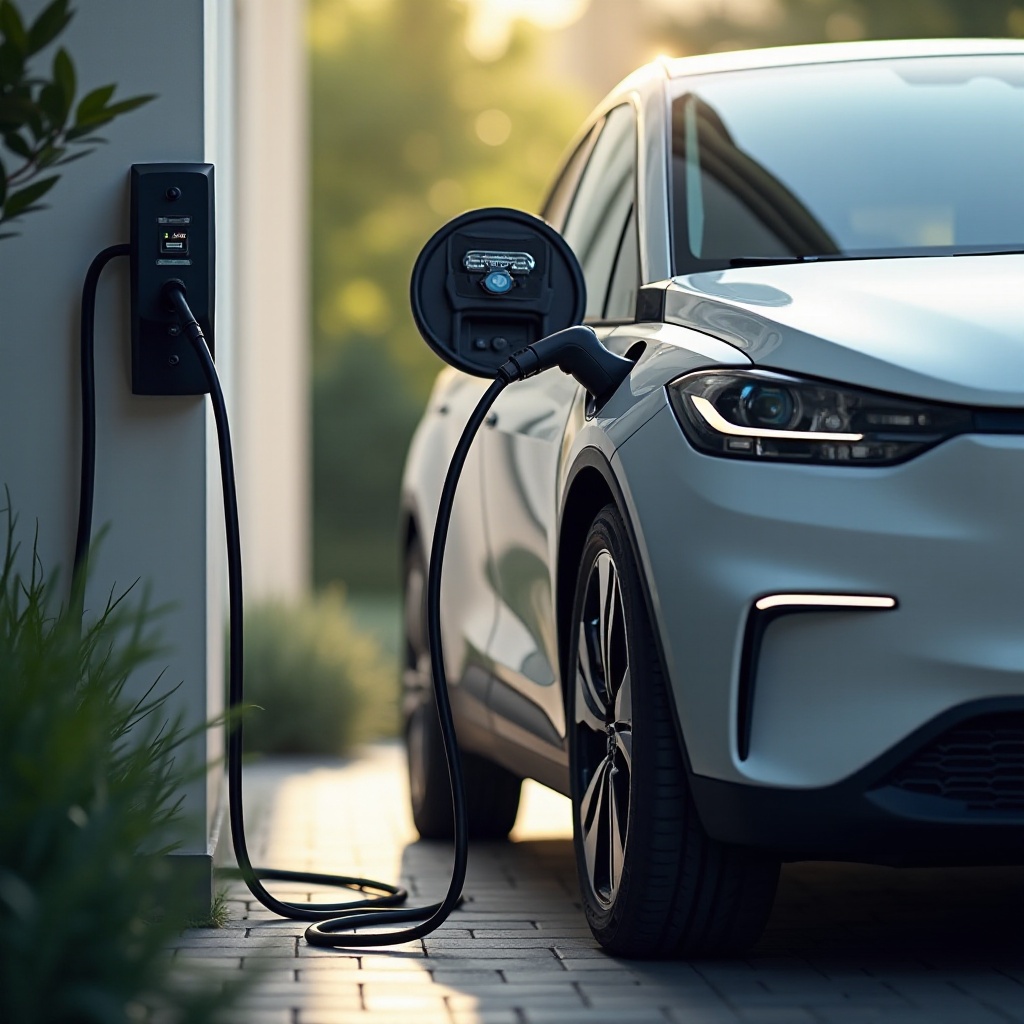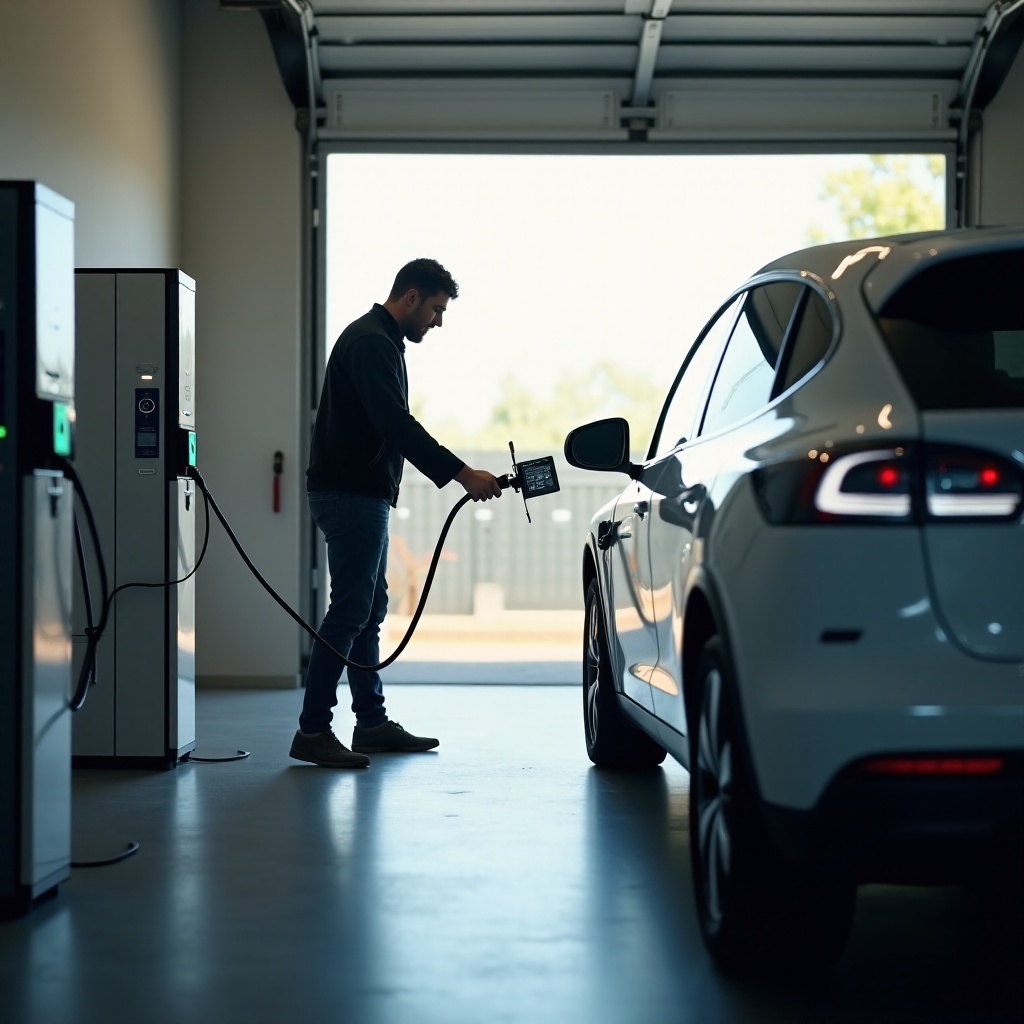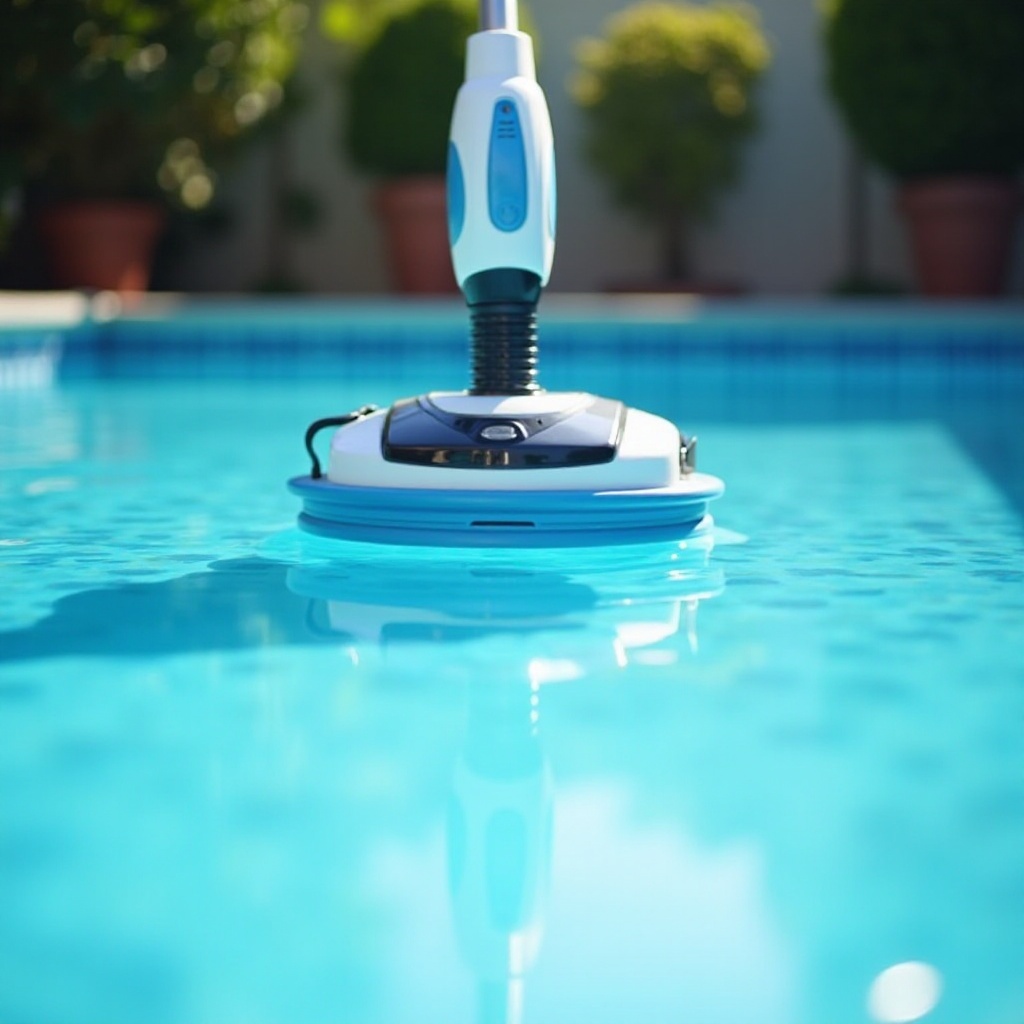Introduction
Electric vehicles (EVs) are revolutionizing our approach to energy consumption. These eco-friendly vehicles not only cut down on emissions but also have the potential to serve as home batteries. Picture using your EV to power your home during outages or lower your electricity bills. This capability is made possible by Vehicle-to-Home (V2H) technology. In this blog, we’ll explore the feasibility, benefits, setup process, and practical applications of using your EV as a home battery.

Understanding Vehicle-to-Home (V2H) Technology
V2H technology facilitates the transfer of energy between an EV and a home’s electrical system. The core concept involves bidirectional charging, meaning the vehicle can draw power from and supply power to the home. This is accomplished through a V2H-compatible EV charger, which regulates the energy flow.
V2H technology utilizes the battery storage capacity of your EV. By integrating your car with your home’s electrical system, it ensures efficient energy use. Essentially, the high-capacity battery of your EV is not only for mobility but also for powering household appliances and systems.
This technology transcends the traditional unidirectional flow of energy, opening up new possibilities for energy management and efficiency. As we delve deeper, you’ll understand why this could be a game-changer for household energy consumption.
Benefits of Using Your EV as a Home Battery
Harnessing your EV as a home battery offers numerous advantages:
- Energy Independence: Reduce reliance on the grid by using your EV’s battery to store and supply energy.
- Cost Savings: Charge your EV during off-peak hours when electricity rates are lower, then use that stored energy during peak hours to save on electric bills.
- Backup Power: Act as a backup power source during outages, ensuring that essential appliances and systems remain operational.
- Efficiency: The bidirectional flow of energy promotes efficient use of the vehicle’s battery, optimizing its capacity for daily household needs.
- Environmental Impact: Reduce grid dependency and utilize renewable energy sources to lower your carbon footprint.
These benefits highlight the versatility and functionality of an EV beyond its primary use for transportation, making V2H technology a compelling option for EV owners.

Requirements and Compatibility
Before you can leverage your EV as a home battery, certain requirements must be met:
- Vehicle Compatibility: Not all EV models support V2H technology. Ensure your EV is V2H-capable. Examples include the Nissan Leaf and Mitsubishi Outlander PHEV.
- V2H Charger: Invest in a V2H-compatible charger that can handle the bidirectional flow of energy. These chargers are critical for the energy exchange process.
- Electrical System: Your home’s electrical system must be equipped to safely interface with the V2H setup. Consult a licensed electrician for any necessary upgrades.
- Energy Management System (EMS): An EMS helps monitor and control energy usage, ensuring the efficient operation of the V2H system.
Meeting these requirements sets the foundation for effectively using your EV as a home battery. Proper equipment and setup are crucial for seamless integration.
Setup Process
Setting up your EV as a home battery involves several steps. Here’s a simplified guide:
- Consultation: Consult with a V2H specialist or your vehicle manufacturer to ensure compatibility and understand specific requirements.
- Acquire a V2H Charger: Purchase and install a V2H-compatible charger to facilitate bidirectional energy flow.
- Home Electrical System Evaluation: Have a licensed electrician evaluate your home’s capacity to integrate with the V2H setup and make necessary adjustments.
- Install Energy Management System: Implement an EMS to monitor and manage the energy flow between your EV and home.
- Configuration: Set up the system according to the manufacturer’s guidelines, ensuring all connections and settings are correct.
- Testing: Perform thorough testing to ensure everything operates smoothly and safely before relying on the system for energy needs.
Following these steps ensures a successful setup, enabling you to efficiently use your EV as a home battery.

Practical Applications and Real-Life Examples
Using your EV as a home battery opens up a range of practical applications:
- Power Outage: During power outages, your V2H-enabled EV can supply electricity to essential appliances and systems.
- Load Shifting: Manage energy consumption by charging your EV during off-peak hours and using the stored energy when demand and cost are higher.
- Renewable Energy Storage: Integrate your V2H system with renewable energy sources like solar panels to store excess energy in your EV’s battery.
- Smart Home Integration: Combine your V2H setup with smart home technology for automated energy management, enhancing efficiency and convenience.
Real-life examples include households in Japan, where V2H technology is becoming popular. Homeowners use EVs to stabilize their electricity supply during emergencies like earthquakes, demonstrating the technology’s practicality and reliability.
Conclusion
The ability to use your EV as a home battery is a groundbreaking step in energy management. By leveraging V2H technology, you can achieve energy independence, significant cost savings, and enhanced backup power options. Understanding the requirements, undergoing the right setup process, and recognizing practical applications will allow you to maximize the benefits of V2H.
Frequently Asked Questions
What is Vehicle-to-Home (V2H) technology?
V2H technology refers to the bidirectional charging capability allowing energy transfer from an EV to a home’s electrical system and vice versa.
Which EV models support V2H?
Some V2H-compatible EV models include the Nissan Leaf and Mitsubishi Outlander PHEV. Always consult your vehicle manufacturer for precise compatibility details.
How do I set up my EV as a home battery?
To set up your EV as a home battery, ensure vehicle compatibility, invest in a V2H charger, evaluate your home’s electrical system, install an energy management system, configure the setup, and perform thorough testing.


